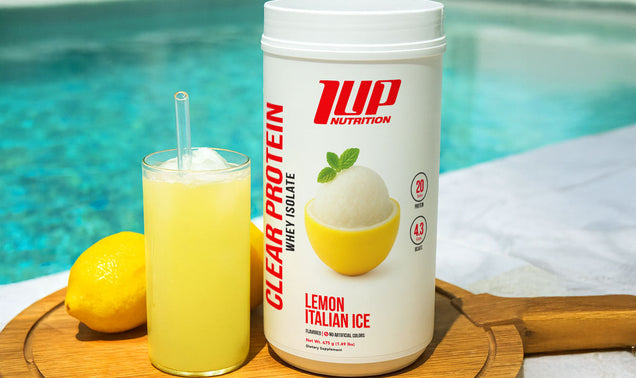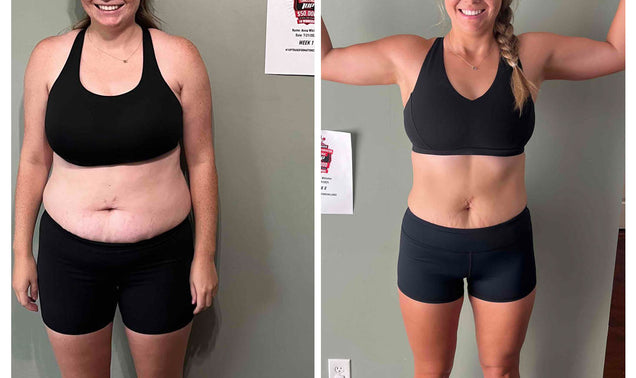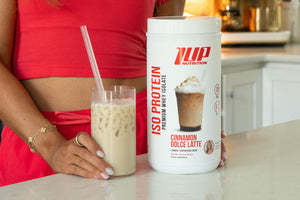Meal prep.
You know it’s necessary in order to stick to your nutrition plan and achieve your transformation results, but you still struggle to get it done each week.
Not anymore!
We’ve got TEN ways to make your weekly meal prep easier than ever.
With these 10 tips, you’ll wonder why you ever thought meal prep was tedious or time-consuming.
Let’s get started!
10 Tips for Easier Meal Prep
Make a Plan
It’s said that “failing to plan is planning to fail,” and this holds true for more things in life than your weekly meal prep. Without a plan in place, your chance of successfully prepping an entire week’s worth of meals is slim to none.
Before you hit the grocery store, sharpen your knife, or bake your first chicken breast, write down what meals you want to prepare for the week, along with what foods you will need to make those dishes, and how much of each food you will need to purchase in order to make enough portions.
Start Small
Prepping an entire week’s worth of meals can seem incredibly daunting to most people. But successful meal prep doesn’t necessarily mean you have to prep ALL of your food for the week.
The path to success is lined with small steps.
If you’re new to meal prepping, this means beginning by preparing 1-2 day’s worth of meals. This way it will stay and taste fresh.
In only a few weeks’ time, you’ll go from having done no meal prep to preparing all of your food!
Stay on Track
At the grocery store, it can be easy to get sidetracked amidst all the specials, sales, and end-of-aisle displays. But remember, you’re on a mission.
You have your shopping list and know what you need (as well as what you don’t).
Impulse purchases hit you twice -- once in your wallet and again on your waistline.
Not having junk food in your house is the easiest way to avoid eating it and cheating on your nutrition plan. Sticking to the list ultimately saves you time, money, and stress. You won’t be tempted to cheat on your diet and you won’t have to spend extra weeks dieting off the calories you potentially ate from having junk food in the house.
Simplicity is Key
Successful meal prep doesn’t require complicated recipes or fancy plating. In the early stages, it’s crucial to keep things simple. This helps ensure success.
Select a few dishes that have a minimal number of ingredients and become proficient in preparing them. Over time, as your prep and cooking skills improve, you can move onto more complex culinary fare.
But in the early stages, simple is successful.
Now, that doesn’t mean your food has to be bland. You can amp up the flavoring (and enjoyment factor!) with various spice combinations. This also helps you get more “life” out of your recipes as you can rotate through different mixes of herbs and spices each week before tiring of a particular dish.
Batch Prep
This tip pertains to those prepping multiple meals for the week.
By “batch prep” we mean do all of your washing, cutting, peeling, slicing, and dicing for all of the meals you are planning to cook rather than prepping the ingredients for one dish and cooking it, then prepping the ingredients for another meal and then cooking that one.
By batch prepping, you’ll save time, which is paramount when trying to meal prep multiple dishes for the week.
Roast, Then Saute
Another multitasking tip to save you time is to start roasting (baking) first, then move onto stove-top cooked dishes that involve sauteing or pan-frying.
The reason for this is that baking and roasting is essentially “hands-free” cooking in that once you put the food on the baking tray and toss it in the oven, you don’t have to really fuss with it for a considerable chunk of time.
Once your proteins and hearty veggies (potatoes, cauliflower, broccoli, etc) are in the oven, then you can focus on your stove-top dishes. This way, by the time you’re done with your stove-top cooking, the oven cooking is completed and you’ll have two dishes done at the same time.
Organize
Building off the previous point, it’s important that you organize items with similar cooking times together.
For example, potatoes and zucchini have two very different baking times and if you try to bake them together on the same sheet, it won’t turn out well. The potatoes will be underdone by the time the zucchini is ready or the zucchini will be burnt when the potatoes are done.
While you can have vegetables with both slow and quick-cook times in the oven, it’s important that you group ones with similar cooking times together. These makes it easier to pull them out of the oven when they’re ready and keep things organized.
Some “slow” roasting vegetables are:
- Broccoli
- Carrots
- Cauliflower
- Onions
- Potatoes
Some “fast” roasting vegetables are:
- Asparagus
- Bell peppers
- Mushrooms
- Summer squash (zucchini)
Don’t Fear Frozen Fruits & Veggies
It’s often thought that fresh is better than frozen.
But, here’s the thing -- frozen fruits and veggies often times retain higher amounts of micronutrients than fresh ones. This is because frozen foods are processed immediately after being taken off the vine. They don’t spend weeks in storage or in transit like the “fresh” fruits and veggies have at your grocery store.
Plus, frozen fare has a longer shelf life, and most of the time they already come chopped, sliced, and diced, which makes removes one of your food prep steps and saves you time during cooking!
Choose Dishes That Reheat Well
We can’t tell you how many times we’ve cooked a dish, saved the leftovers, and then tried to reheat them only to be severely disappointed by the taste and texture.
Simply put, some foods just do not reheat that well, hamburgers, fried food, fish, etc.
Part of successful meal prep is selecting foods/dishes that reheat well in the microwave or oven. Examples include pasta, casseroles, stir-frys, rice dishes, and most chicken-based dishes freeze and reheat well.
It may take a bit of trial and error to figure out which dishes work best for you. If so, try cooking a small batch the first few times and seeing how it fares when stored and reheated.
Invest in Quality Storage Containers
After you have prepared and cooked all of your food for the week, you’re going to need somewhere to store it. And those cheap, plastic containers from the local take-out place aren’t going to cut it.
Since you’re going to be doing a lot of meal prep in the weeks, months, and years to come, it is worth it in the long run to invest in some high-quality food storage containers.
You can choose either glass or plastic containers to store your food, but if you choose plastic containers, make sure you get the ones that are BPA-free and won’t melt when placed in the microwave.
Our personal favorite storage containers are Pyrex dishes with lids as well as Mason jars (for salads and overnight oats).
When you become a meal prep all-star, you may also want to invest in an insulated bag if you’re going to be taking all of your daily meals with you. The insulated bag will keep the food at a safe temperature and avoid any spoilage.






